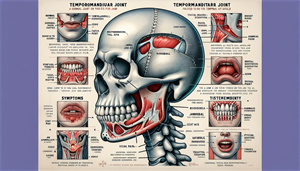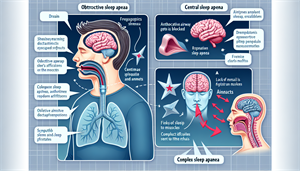
Everything You Need to Know About Temporomandibular Joint Disorder
Are you experiencing jaw pain, facial discomfort, or headaches? Have you ever wondered if these symptoms could be related to a condition called temporomandibular joint disorder (TMJ)? In this article, we will delve into the world of TMJ disorders, exploring the anatomy, causes, symptoms, diagnosis, and treatment options available. We will also discuss how you can manage TMJ disorders at home and when to seek professional help. By the end, you will have a thorough understanding of TMJ disorders and feel empowered to take control of your jaw health.
Key Takeaways
Gaining an understanding of Temporomandibular Joint Disorder requires knowledge of jaw anatomy and function, along with the various causes and treatments that may be associated with it. Identifying the causes involves analyzing potential physical/emotional stressors, poor posture, oral health issues & injuries to the jaw. Seeking professional help from a TMJ specialist is essential for accurate diagnosis & appropriate treatment. Regular dental checkups are key prevention strategies.
Understanding Temporomandibular Joint Disorder
Temporomandibular joint disorders, or temporomandibular joint TMJ disorders, refer to a group of health conditions affecting the jaw and the muscles controlling it, collectively known as temporomandibular disorders TMD. The temporomandibular joint is a hinge joint that provides the connection between the lower jaw and temporal bones of the skull. It allows for movement such as eating, talking and yawning. TMJ disorders can be caused by various factors, such as: strain on the jaw joints and muscles bruxism (teeth grinding) injury arthritis displacement of the jaw joint disks. Treatment for TMJ disorders depends on factors such as symptoms, age, overall health, and the severity of the condition.
Jaw Anatomy and Function
The comprehension of TMJ disorders heavily relies on the knowledge of jaw anatomy and function. The temporomandibular joints (TMJ) enable the mandible (lower jaw) to move in multiple directions, including: Upwards Downwards Sidewards Forwards Backwards This allows us to perform activities such as chewing, speaking, yawning, and swallowing. Jaw muscles, joints, and nerves work together to enable seamless jaw movements. When these components are affected by injury, inflammation, or other issues, TMJ disorders can arise, causing pain and discomfort.
Types of TMJ Disorders
There are various types of TMJ disorders, each with different causes and symptoms. Some of the most common types include: Jaw muscle disorder Temporomandibular joint dysfunction (TMD) Degenerative joint disease (DJD) Other structural changes to the temporomandibular joint Jaw muscle disorder occurs when the muscles controlling the jaw become tight, weak, or uncoordinated, leading to pain and clicking or popping of the jaw. TMD is characterized by inflammation or irritation of the temporomandibular joint, resulting in pain and difficulty opening and closing the mouth, as well as jaw locking. DJD involves the deterioration of cartilage within the temporomandibular joint, causing pain and limited jaw movement. Other structural changes may include misalignment of the jaw, dislocation of the jaw, and fractures of the jaw, all of which can result in pain and difficulty opening and closing the mouth. Proper treatment is contingent on accurately identifying the specific type of TMJ disorder.
Identifying the Causes
Potential causes of TMJ disorders include physical and emotional stress, poor posture, and oral health issues. Physical and emotional stress may contribute to the development of TMJ disorders by causing muscle tension, teeth clenching, or grinding.


